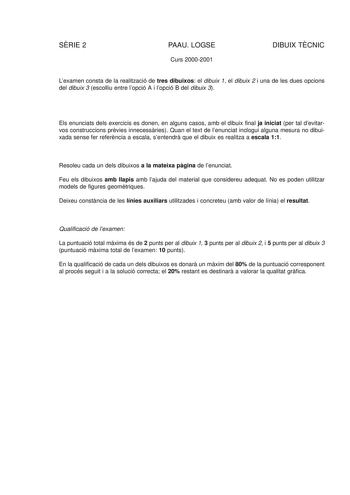Examen de Inglés de Cataluña (selectividad de 2001)

| Comunidad Autónoma | Cataluña |
|---|---|
| Asignatura | Inglés |
| Convocatoria | Ordinaria de 2001 |
| Fase | General |
Temas mencionados new_releases

Kevin Warwick
Kevin Warwick, FIET, FCGI (born 9 February 1954) is a British engineer and Deputy Vice-Chancellor (Research) at Coventry University in the United Kingdom. He is known for his studies on direct interfaces between computer systems and the human nervous system, and has also done research concerning robotics.
Fuente: wikipedia.org
Bill Joy
William Nelson "Bill" Joy (born November 8, 1954) is an American computer scientist. Joy co-founded Sun Microsystems in 1982 along with Vinod Khosla, Scott McNealy and Andreas von Bechtolsheim, and served as chief scientist at the company until 2003. He played an integral role in the early development of BSD UNIX while a graduate student at Berkeley, and he is the original author of the vi text editor. He also wrote the 2000 essay "Why the Future Doesn't Need Us", in which he expressed deep concerns over the development of modern technologies.
Fuente: wikipedia.org
Nanotechnology
Nanotechnology ("nanotech") is manipulation of matter on an atomic, molecular, and supramolecular scale. The earliest, widespread description of nanotechnology referred to the particular technological goal of precisely manipulating atoms and molecules for fabrication of macroscale products, also now referred to as molecular nanotechnology. A more generalized description of nanotechnology was subsequently established by the National Nanotechnology Initiative, which defines nanotechnology as the manipulation of matter with at least one dimension sized from 1 to 100 nanometers. This definition re…
Fuente: wikipedia.orgQuantum computing
Quantum computing studies theoretical computation systems (quantum computers) that make direct use of quantum-mechanical phenomena, such as superposition and entanglement, to perform operations on data. Quantum computers are different from binary digital electronic computers based on transistors. Whereas common digital computing requires that the data be encoded into binary digits (bits), each of which is always in one of two definite states (0 or 1), quantum computation uses quantum bits, which can be in superpositions of states. A quantum Turing machine is a theoretical model of such a compu…
Fuente: wikipedia.orgGenetically modified food
Genetically modified foods or GM foods, also known as genetically engineered foods, are foods produced from organisms that have had changes introduced into their DNA using the methods of genetic engineering. Genetic engineering techniques allow for the introduction of new traits as well as greater control over traits than previous methods such as selective breeding and mutation breeding.
Fuente: wikipedia.org
University of Reading
The University of Reading is a public university located in Reading, Berkshire in England. It was established in 1892 as an extension college of Christ Church, Oxford under the name University College, Reading. It received the power to grant its own degrees by Royal Charter in 1926 from King George V, and was the only university to receive such a charter between the two world wars.
Fuente: wikipedia.org


